This garden for me is a place for wind to blow through the chimes, for sunshine to dapple the shade, for me to sooth out the wrinkles of now, to learn what grows, and what will not, underneath a Black Walnut Tree. A garden is always a place for repose, to think, to sit and just be, to remember, and sometimes maybe to forget, the day, the week, the news. Sometimes it is a place to fall down in a slump on that stoop, and weep, tears running down my cheeks, because I can not forget, should not, would not, will not.
Every year I try something new, and so I have learned a thing or two, as the hosta’s grow larger and the antique ferns grow stronger, and everything settles in.
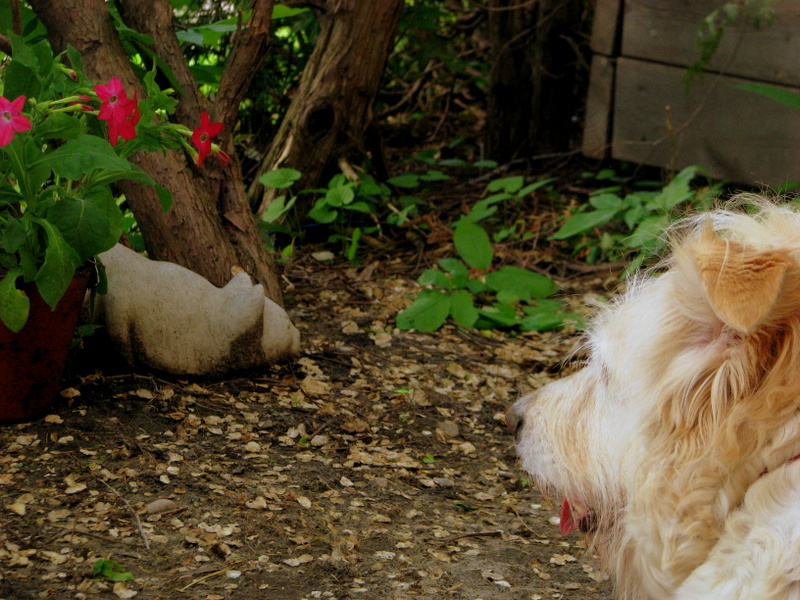
In the first year, that first spring 6 years ago, there wasn’t much here but bare crappy dirt, hosta’s and Lily Of The Valley, the Virginia Creeper was wild and went wherever it liked. So I went out and bought a few things, some tricolour Ajuga and a beautiful variegated Jacob’s Ladder, and a couple ferns.

However, the next summer I could not figure out why everything looked so poorly; until I caught her in the act.
I live beside a busy parking lot in a yard with no real fence, and so Irish goes out on a lead. Well, it would seem as though she had taken to peeing in my garden, so that next year, 2015, the Ajuga and the Jacob’s Ladder died.
So I moved her lead so she couldn’t reach and resigned to start over.

So 2016 was a new spring, a new start. I had planted a couple new hostas and found the golden creeping jenny, and as well discovered Swedish Ivy.
Yet, even though I was very disappointed that my garden had been wrecked by her pee, I did discover that I preferred playing with the different shades of green, from the chartreuse to a dark blue-green, and so my garden evolved. I have dappled that creeping jenny all along my side of the garden, in a sweep that goes from golden to green.

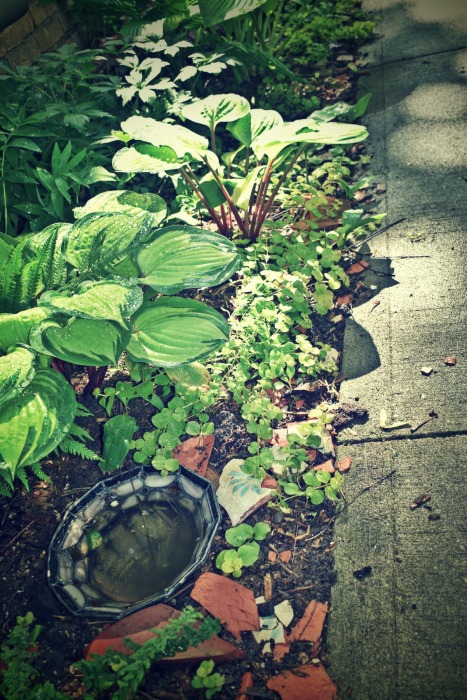
Over these 3 years, I have learned that Swedish Ivy is a fantastic houseplant and that when you take a cutting it will root whether you stick it in water or right into the dirt, it roots either way. I have learned that it LOVES this in-between space of mine, and grows big and lushes and lovely.
TIP: Swedish Ivy is easy to grow, and does not require a lot of light. Great for the shade where it will get no direct sun, cept a little late afternoon, or alittle morning light. You can take a cutting from the plant at end of season and keep over the winter. Next spring, after the last frost date, plant straight into a container garden – it has a lovely trailing habit like ivy. Or you can instead dig up and plant into pots, or just keep one and take snips from it for next year. It really does make a wonderful houseplant.
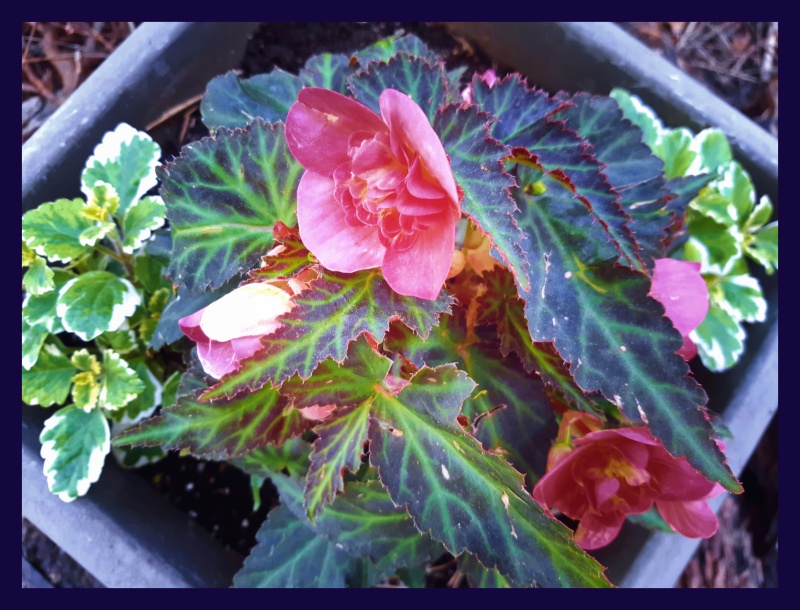
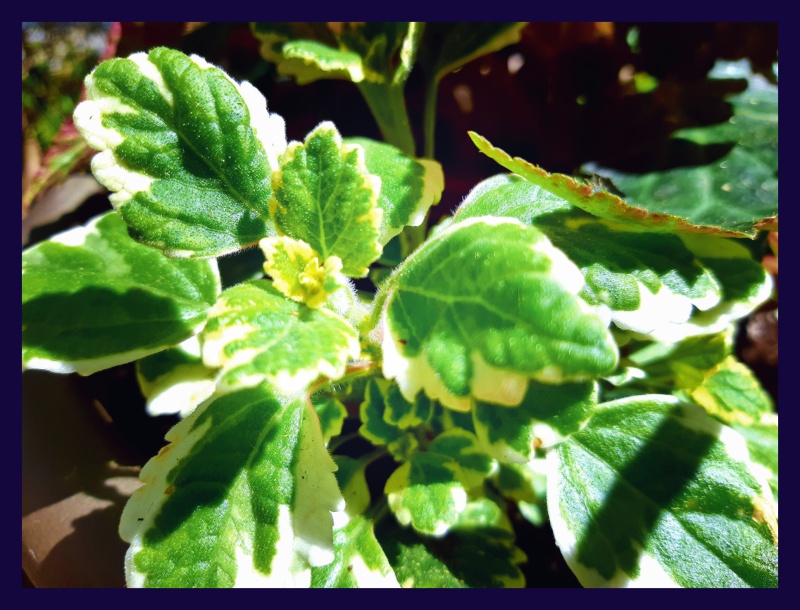
The hilarious thing about it is that it really does look an awful lot like the creeping charlie weed that was the scrooge of my mom’s gardens, and lawn, she was constantly chasing it around the yard trying to be rid of it, but it was too tenacious.
And this year I did finally accept that its no good to struggle with Geraniums, even if mom loved them, they just hate the mostly shade I have here, and what sun I do have is not at all good enough for them to thrive, they just end up looking stringy and pathetic. However, I did also learn that Begonias love this light, and don’t seem to mind the Black Walnut, so I bought two of them with neat spikey dark leaves and Coral flowers, and paired a new variegated Swedish Ivy, and a Coleus that has these splashes of red, green and peachy coral.


Oh, and another thing I learned this year is that Coleus and Swedish Ivy are actually related. Also, it is not from Sweden, and is not a true ivy. Actually Swedish Ivy, or Plectranthus, are native to the southern hemisphere, perennial in zone 9-11. In fact, it gets its name I guess since it was first popularized in Sweden. I can see why the swedes liked it, as it really is a rather versatile and useful plant, and I know the Swedes are rather fond of both versatile and useful things.
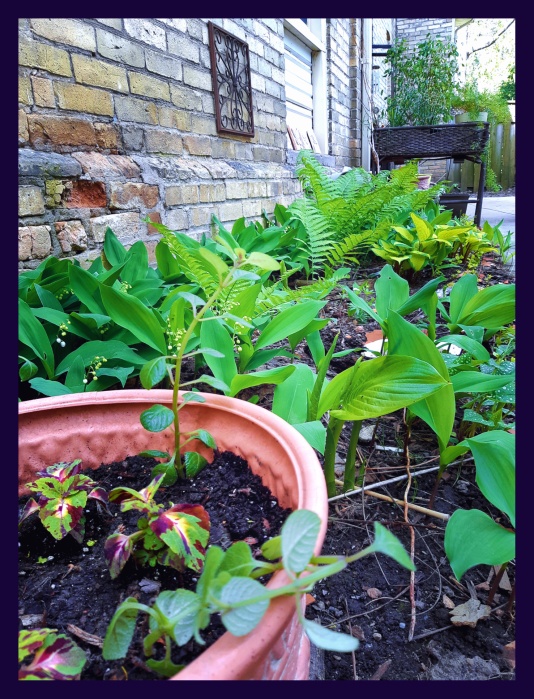
I’ve learned that as tenacious as Virginia Creeper can be, that it does respond well to pruning, and so you can train it to do what you want. I’ve trained this one that came with the garden to create a wall of leaves between me and the world outside this little garden nook of mine.
I’ve learned that ditch Lilies do not mind dog urine, and so I’ve lined them up along the hedgerow, which incidentally is the only spot that receives sunshine at all, of morning light and in the late afternoon into the evening.

Such is a garden, a changing thing, a living and breathing entity, a lesson, a joy, and I am very thankful for it.
“God made a beauteous garden
With lovely flowers strown,
But one straight, narrow pathway
That was not overgrown.
And to this beauteous garden
He brought mankind to live,
And said “To you, my children,
These lovely flowers I give.
Prune ye my vines and fig trees,
With care my flowers tend,
But keep the pathway open
Your home is at the end.”
God’s Garden”
― Robert Frost
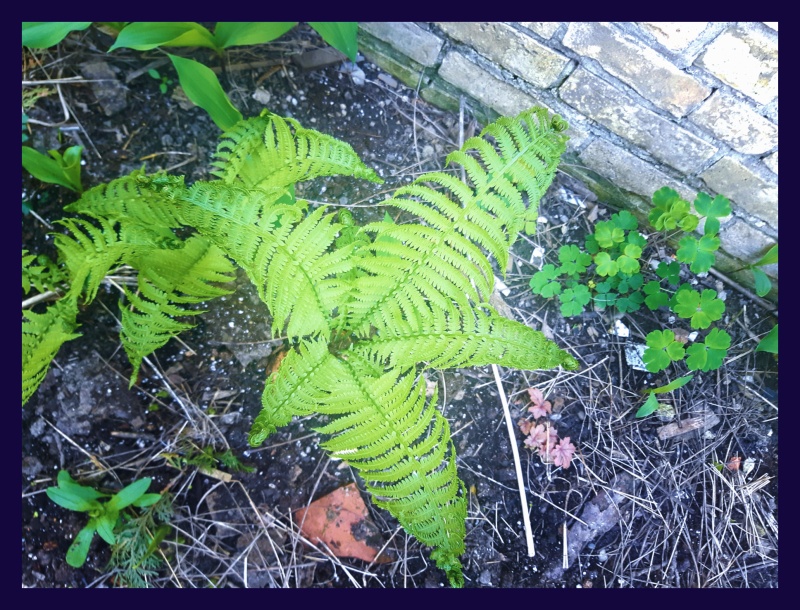


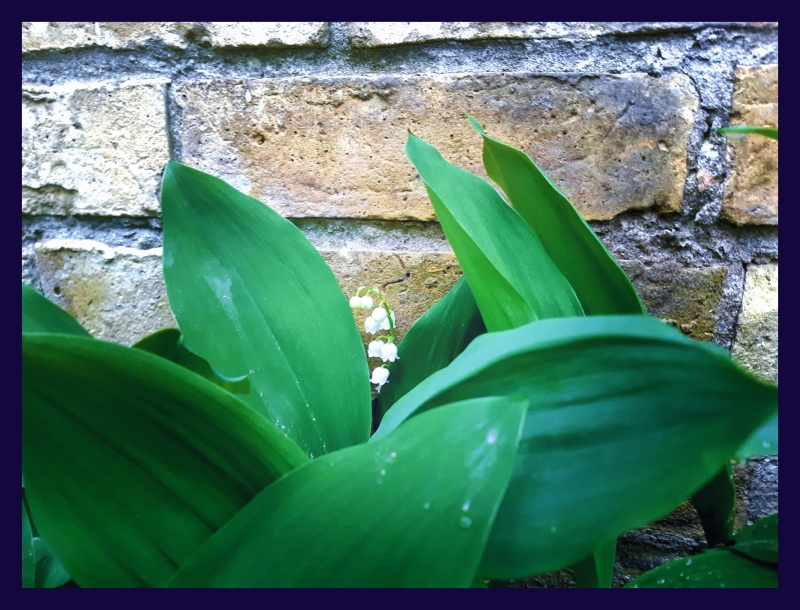

One thought on “Lessons From 6 Springs In A Garden”